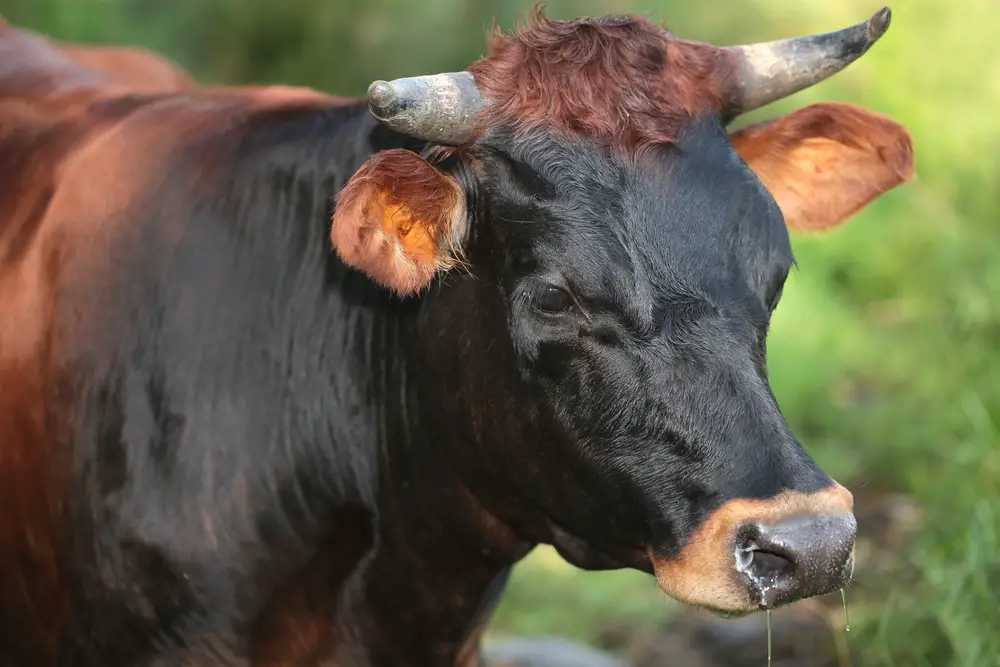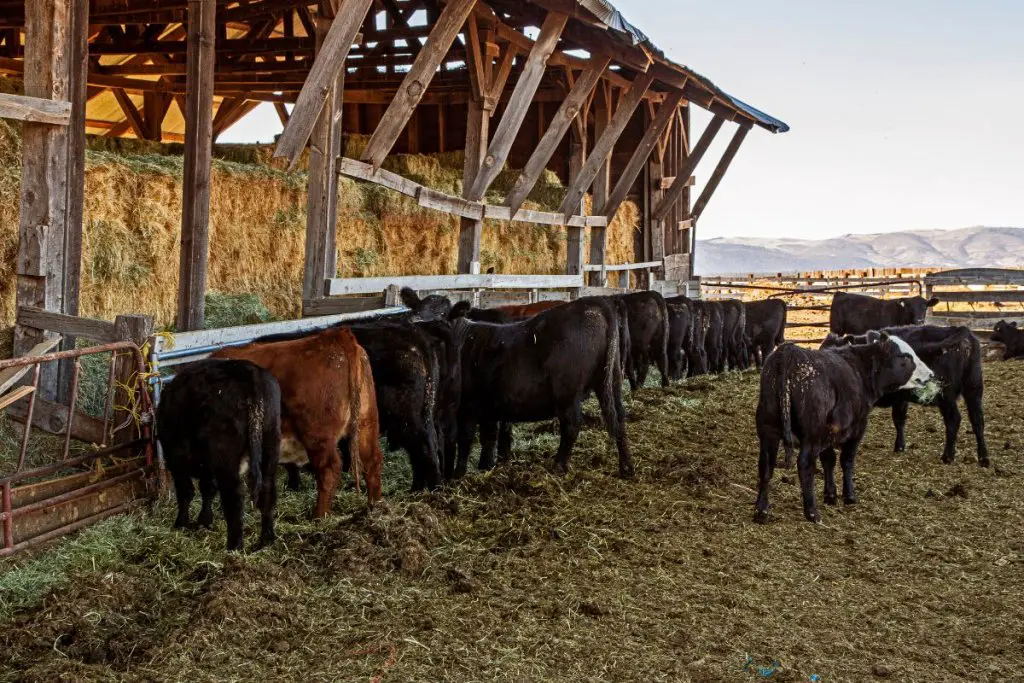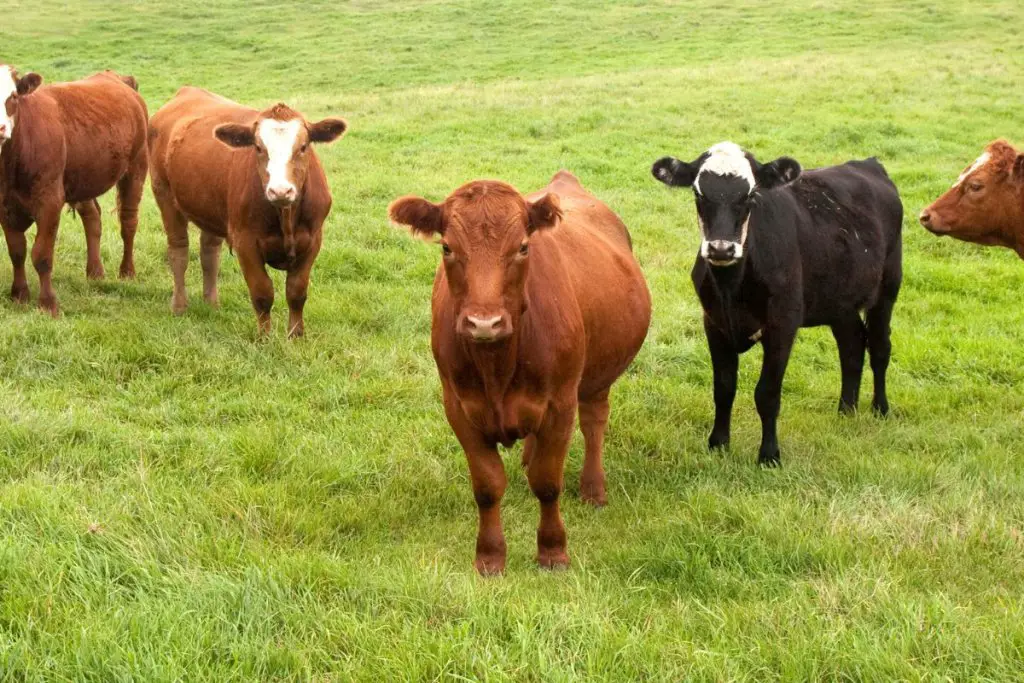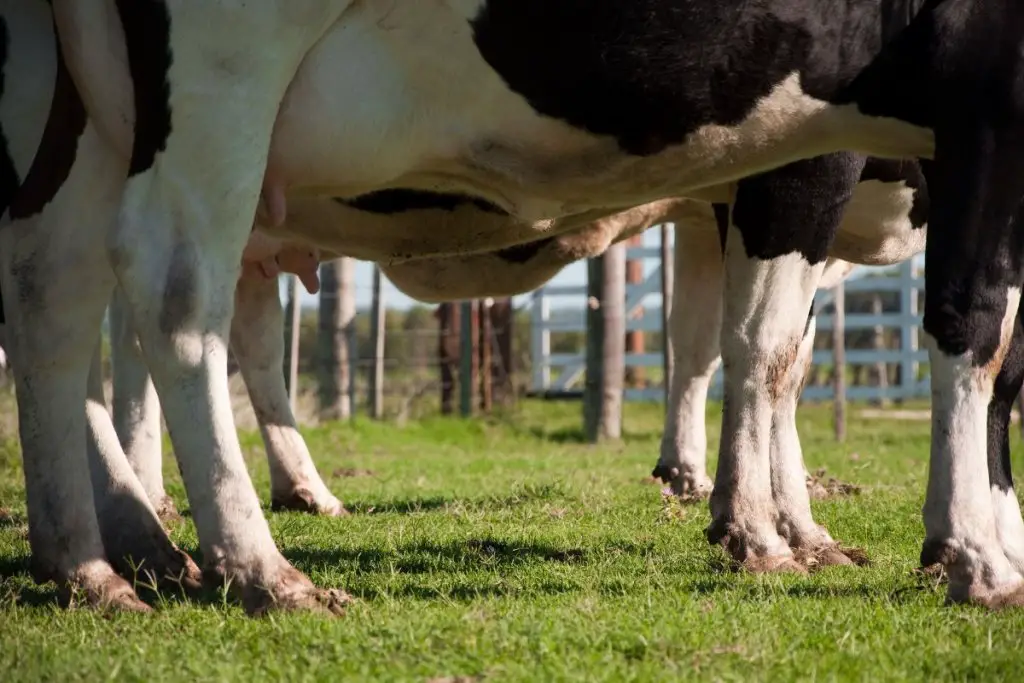There are common cow diseases that new owners should watch for. Undetected, these could lead to diarrhea, loss of body weight and infected meat, but fortunately, most diseases aren't fatal for cows.
An ideal world would be without disease in all living things! But we do not always get what we wish for, which is why now and then you’ll have to deal with a cattle disease or another, even in a new herd.
While the prevalence of cattle diseases is generally rare in new herds, you may still be faced with some if you buy already infected animals or when an outbreak happens.
From bovine viral diarrhea and mucosal disease to bloat, here are five common diseases in cattle that you must watch for in your new herd to ensure optimal animal health and eliminate production losses.
Table of Contents
1. Bovine Viral Diarrhoea
Bovine viral diarrhea or BVD is a common cattle disease caused by the notorious bovine viral diarrhea virus (BVDV). It also manifests in other ruminants and is common in many countries. (About 70% of the cattle in Australia are actively infected.)
An animal may get infected by bovine viral diarrhoea virus after birth or through fetal congenital infection before birth (usually in the first 100 days of the gestation period.) A carrier animal also spreads the virus to other animals through various excretions and secretions.
If the infected foetus is born successfully, the calf will have BVDV infection, face it throughout its life, and spread it on your farm. You must buy your cattle from a reputable, BVDV-free farm to avoid having the disease in your new herd.
Bovine viral diarrhoea is also called bovine pestivirus infection. Pestivirus is a genus of positive-sense, single-stranded RNA genomes in the family Flaviviridae, which also includes Border Disease Virus (BDV) and Classical Swine Fever Virus (CSFV).

Pestivirus cattle may have abortions, susceptibility to attendant infections, respiratory disease, ill-thriftiness in calves, and diarrhea. Symptoms and signs in adult cattle include lethargy, diarrhea, signs of mucosal disease, ocular discharge, reduced milk production, fever, and loss of appetite.
BVDV types include BVDV-1 (Type 1) and BVDV-2 (Type 2). Mucosal disease occurs when persistently infected cattle (PI cattle) suffering from BVDV-1 acquire a more severe BVDV strain.
PCR tests using ear notch tissue or blood samples effectively diagnose BVD. A serological test (BVD Antigen Elisa test) can help determine if the animal’s body produces antibodies against the BVD antigen. Bulk-milk screening is necessary to diagnose the disease at a large scale to hasten treatment and eradication.
These tests are crucial in pregnant animals since doing an antibody test in new calves proves futile because of shielding (maternal antibodies ingested by the calf through colostrum will bind the virus and prevent its detection using antibody-based tests.)
Controlling BVD is possible in several ways. Virology experts recommend following a vaccination program for various bovine diseases, and vaccines for BVD are available as either killed virus or modified live virus vaccines.
All PI animals must be culled so they do not infect other animals in the feedlot.
Feeding calves with high-quality colostrum can also help. Cattle herds struggling with BVD shed lesser virus for a short time if they have antibodies when acute infection occurs.
2. Bovine Respiratory Disease Complex
BRDC or bovine respiratory disease complex is a respiratory system infection common in young weaning cattle that is caused by several factors such as bacterial and viral respiratory pathogens.
A weakened immune system and stress also cause BRDC, which explains why it’s also called “Shipping fever” because most animals catch this type of bovine pneumonia shortly after stressful transportation. Pregnant cows are at higher risk of catching Shipping fever.

BRDC will cause cattle to lose appetite, have a runny nose, develop a fever, and experience respiratory discomfort. Other clinical signs include head extension, depression, coughing, and staying away from other animals.
It’s advisable to always quarantine new incoming animals for a few days until you are sure they are safe to have direct contact with the rest of the cattle population.
You can treat BRDC using anti-inflammatory and prescription injectable antibiotics with the help of local veterinarians because the disease may have different resistance levels in different areas. The vet is better placed to know what works best in your area.
3. Hardware Disease
Bovine Traumatic Reticuloperitonitis or hardware disease isn’t really a disease but an injury to the reticulum that occurs when an animal ingests nuts, bolts, nails, wire, needles, safety pins, staples, and even other sharp nonmetallic objects like glass.
The objects are usually found in hay and commercial feeds. Most of them are bundled up with the feed during baling in the field or packing in cattle feed mills.

When the reticulum contracts, the foreign objects may pierce the reticulum wall and cause infections and damage nearby organs like the heart.
Hardware disease is prevalent in beef cattle but is also common in dairy herds. Its signs and symptoms include stiffness, not chewing cud, loss of appetite, and swelling of the brisket and neck.
In most cases, the disease isn’t fatal, and you might only notice that your cow or bull was affected when you do a postmortem when it dies of another disease. This happened with one of my dairy cows in whom I found nails, nuts, bolts, and even a needle during a postmortem!
If your cattle are diagnosed with hardware disease, you can have a qualified vet remove the foreign objects surgically or with a magnet put in the stomach.
4. Bloat
Bloat is typical in young calves transitioning to a concentrate-based diet or solid food. It’s also common in cattle that consume legumes like white clover, frosted alfalfa, and ladino. The plants get fermented quickly, and gas is produced in the stomach.
Since bloat causes gas to build up in the animal’s stomach quickly, you’ll notice labored breathing and stomach distention which occurs mostly on the left side.

As the gas inside the stomach increases without being eliminated fast, it exerts pressure on vital internal organs. This makes bloat a critical emergency that kills cattle quite quickly. I’ve seen dairy cows from neighboring farms get affected and die because the owner noticed it too late.
Closer home, I’ve had a few instances of bloat in my dairy cows, but I must have been lucky to notice them in good time. I had to call a vet each time to ease the pressure by using a stomach tube if it had free-gas bloat or administering vegetable oil if it had frothy bloat.
5. Foot Rot
Foot rot is an infection common in cattle living in areas where they are exposed to moisture. Various soilborne fungi and bacteria such as corynebacterium, streptococci, Fusobacterium necrophorum, and staphylococci cause foot rot.
An infection starts when these bacteria and fungi enter foot tissue through wounds, cuts, abrasions, or bruises.

Foot rot clinical signs include:
- Lameness
- Foot swelling
- Toes spreading out
- The tissue above the hoof becomes red
- The foot abscesses above the hoof and produces a discharge (whose most notable characterization is a foul odor)
- Loss of appetite
- Fever
- Loss of body weight
In severe cases, a persistent infection develops into deeper foot tissues. It may also reach a joint or other and cause chronic arthritis.
Your veterinarian can help treat affected cattle using antibiotics or specific food additives.
Since lameness is also a common sign when a foreign object like a nail or wire lodges itself in the hoof, you must first check the hoof thoroughly. The animal wouldn’t respond to foot rot medication if you confuse the disease with a foreign object lodged in the hoof.
